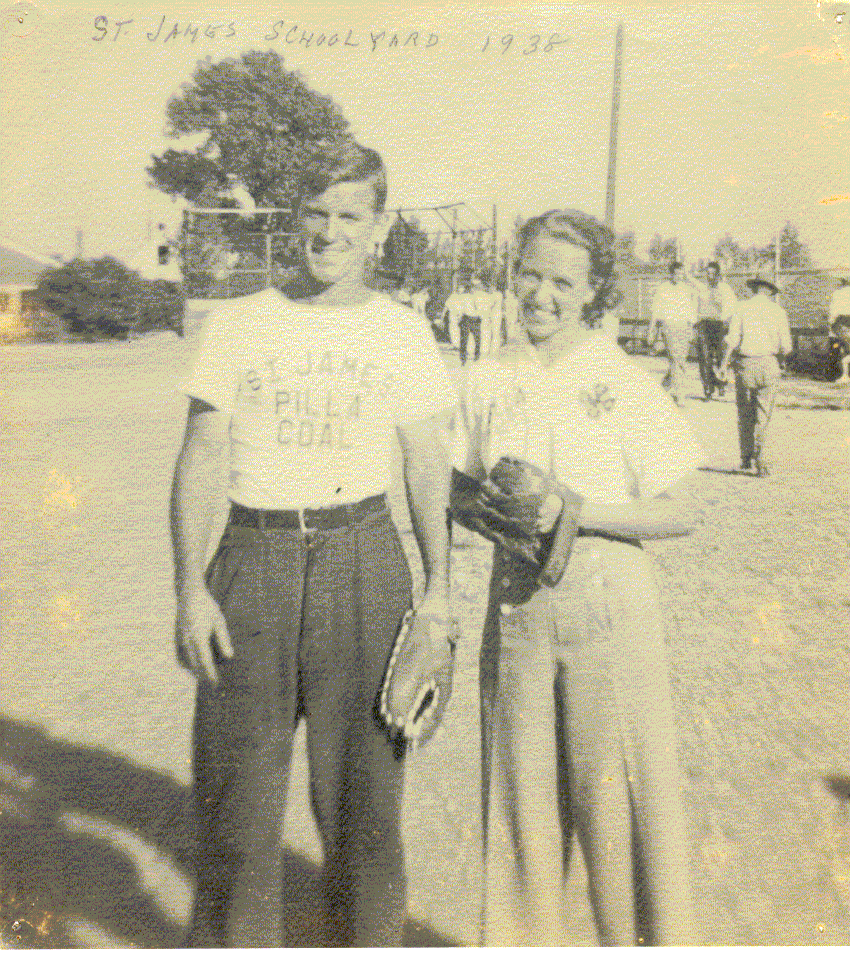
There were men's and women's fast pitch softball leagues held in St. James School Yard in the 1930s and 40s. The "field" was gravel, and the left field "fence" was the stage, but spirited games were played nontheless. See story below photo.
PLEASE: Anyone with more photos or stories of these leagues please contact me, Bob Corbett.

Bob and Louise Corbett at games in 1938
The St. James Parish league survived for 15 or more years. There were both men and women's leagues, but no co-ed ball to the best of my knowledge. The games were fast pitch and there were some very tough pitchers. I remember John Garavaglia being one who used an extremely unusual windup. Most used the windmill pitch. His was harder to describe, but he was quick, in the strike zone and had a wicked curve. Art Schmitz was another feared pitcher. He used the windmill and was extremely fast but had control problems. I was just a kid, but the softball league was my business. I had a huge 25 gallon very heavy "crock." My grandmother Corbett and mom helped me make an enormous amount of lemonade. I sold it for five cents a glass, and ran a clean operation, with a special wash bucket to keep my glasses clean. Pitcher Art Schmitz used to come to me after every single inning and drink down three or four glasses, he'd put so much into the inning.
In this 1938 photo Art Schmitz (on the left) and his buddies, Thomas, "Porkey" Conroy and Robert "Bob" Walden are only 18 years old.
When Art was pitiching and I was selling lemonade must have been 1946 or 47.
Special thanks to Mary Schmitz, Art's wife, for this photo.
| HOME | DOGTOWN |
| Bibliography | Oral history | Recorded history | Photos |
| YOUR page | External links | Walking Tour |